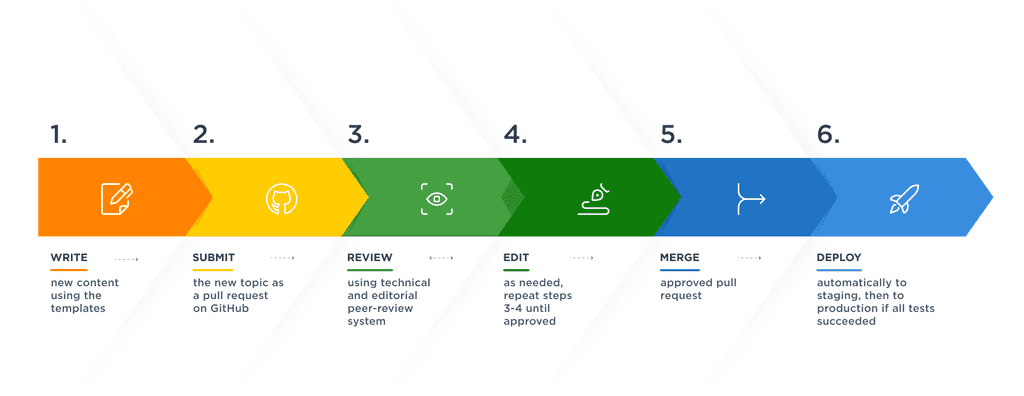DocsKit's editorial workflow is built upon the Docs as Code approach. In the Docs as Code model, documentation is created using lightweight markup languages like Markdown, tracked using version control systems like Git, and deployed through continuous integration/continuous deployment (CI/CD) pipelines. The key strength of this model lies in its ability to facilitate collaboration, version tracking, and automation, bringing greater speed and consistency to your documentation process.

The steps of the DocsKit Editorial Workflow:
- Write: Write your documentation topics using our provided templates, in Markdown. Feel free to use any text editor that supports this format.
- Submit: Submit the new topic as a pull request on GitHub. This will notify the team to start the review process.
- Review: Make sure that your new content is peer-reviewed by both your subject matter experts and skilled writers.
- Edit: Based on the review feedback, you may need to make changes to your documentation content. Repeat steps 3 and 4 as many times as necessary until the topic is approved.
- Merge: Once your topic is approved, merge the pull request.
- Deploy: The new content will first be deployed to a staging environment for final testing and review, before being pushed to the production site. This step ensures that the end-users always see the most polished and accurate version of your documentation.
Want to learn more about Docs as Code? Read the book Docs Like Code by Anne Gentle.